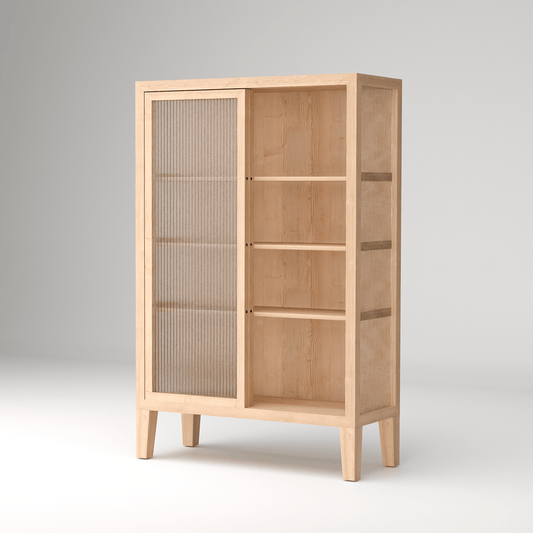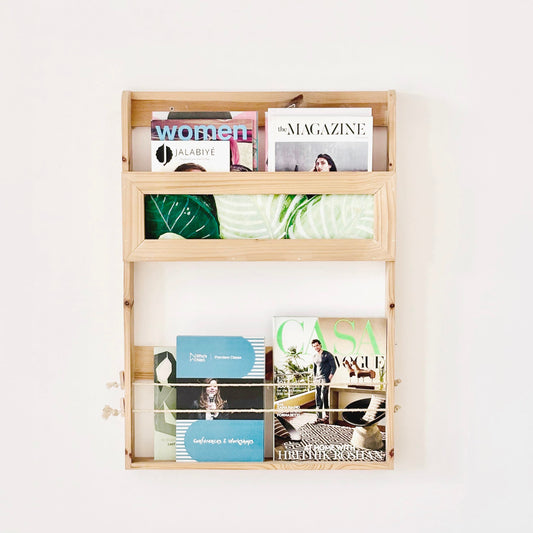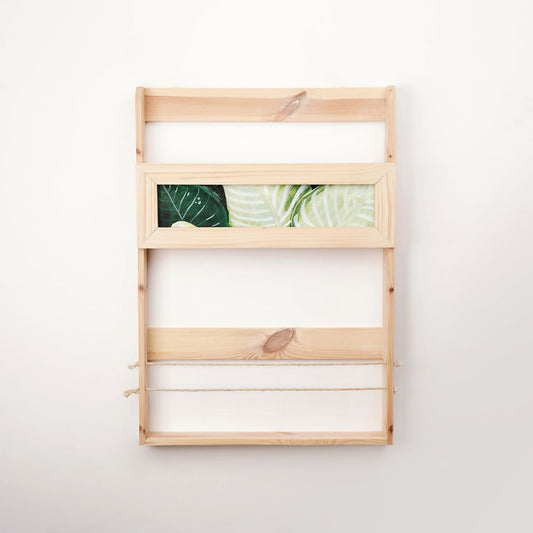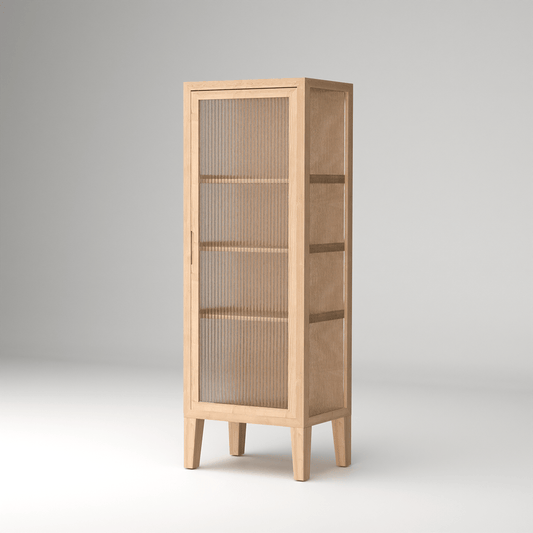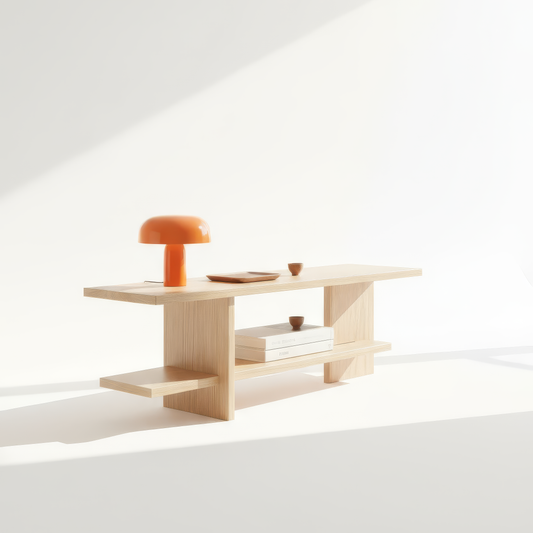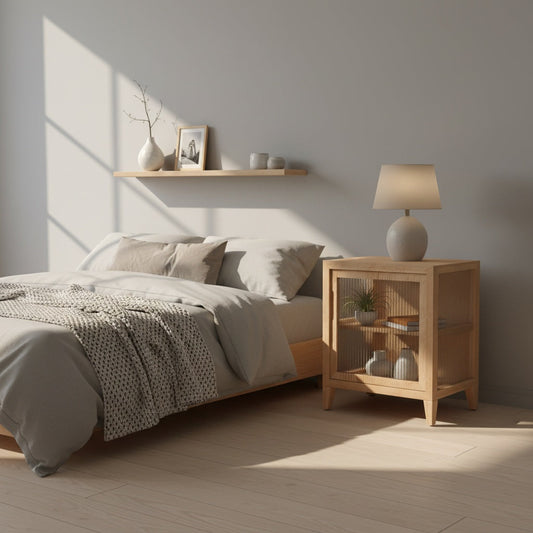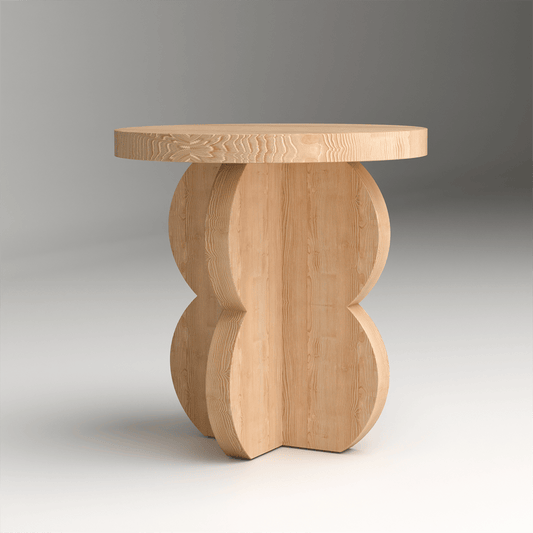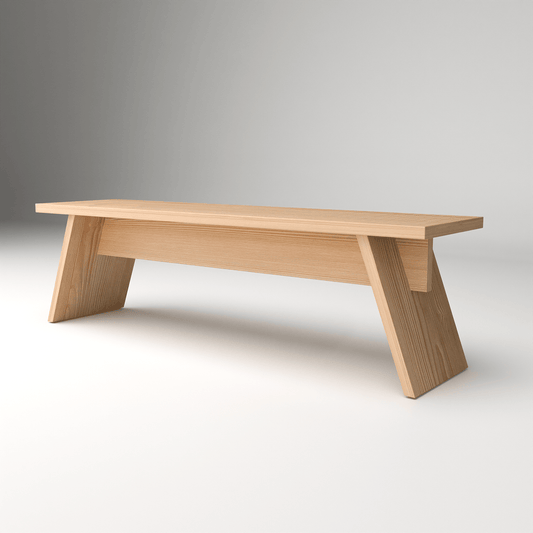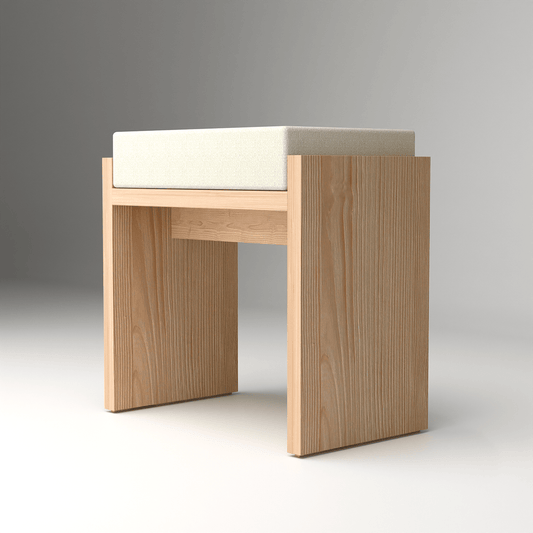The art of living well in small spaces has never been more relevant than it is today, as urbanization, housing costs, and environmental consciousness drive more people toward compact living solutions. Multifunctional furniture emerges as the perfect answer to these challenges, offering innovative ways to maximize space while maintaining the beauty, comfort, and functionality that make a house feel like home.
At A Good Life, we understand that small spaces don't mean compromising on style or sustainability. Our handcrafted pine wood furniture is designed with versatility in mind, creating pieces that serve multiple purposes while maintaining the clean aesthetic and natural beauty that define quality design. Each piece tells a story of thoughtful engineering and sustainable craftsmanship that proves small spaces can be both beautiful and highly functional.
Understanding the Small Space Challenge
Modern living presents unique challenges that multifunctional furniture is uniquely positioned to address, from urban apartment living to conscious downsizing movements.
The Reality of Compact Living
Urban Housing Trends: City living increasingly means smaller square footage at higher costs, making every square foot precious.
Minimalist Lifestyle: Growing appreciation for simplified living that focuses on experiences over possessions.
Environmental Consciousness: Recognition that smaller homes have lower environmental impact and resource consumption.
Financial Benefits: Reduced housing costs allow for investment in higher-quality, more durable furnishings.
Flexibility Needs: Modern lifestyles require spaces that can adapt to work, entertainment, relaxation, and social activities.
Space Utilization Psychology
Visual Spaciousness: How furniture choices can make spaces feel larger than their actual dimensions.
Functional Efficiency: The satisfaction that comes from furniture that serves multiple needs elegantly.
Clutter Reduction: The psychological benefits of organized, uncluttered living spaces.
Adaptability Comfort: The security of knowing your space can adapt to changing needs.
Quality Over Quantity: The pleasure of owning fewer, better-designed pieces that serve multiple functions.
Our Minimalist Wooden Nesting Tables exemplify smart space utilization, providing multiple surface options when needed while tucking away neatly to maintain open floor space. This design approach demonstrates how multifunctional furniture can enhance rather than compromise small space aesthetics.
Design Principles for Multifunctional Furniture
Creating furniture that successfully serves multiple functions requires careful attention to design principles that balance competing needs and priorities.
Versatility Without Compromise
Primary Function Excellence: Ensuring that each function is performed well, not just adequately.
Seamless Transitions: Design elements that allow smooth transitions between different uses.
Intuitive Operation: Functions that are easy to understand and use without complex mechanisms.
Aesthetic Consistency: Maintaining visual appeal regardless of which function is being utilized.
Durability Across Uses: Construction that can handle the stress of multiple functions over time.
Space-Efficient Engineering
Vertical Utilization: Designs that take advantage of vertical space often underutilized in small homes.
Nesting Capabilities: Pieces that can be stored within each other to minimize footprint when not in use.
Folding Mechanisms: Reliable folding systems that allow furniture to collapse for storage.
Modular Systems: Components that can be combined in different ways for different functions.
Hidden Storage: Incorporating storage within furniture pieces without compromising their primary function.
Storage-Integrated Furniture Solutions
Storage represents one of the biggest challenges in small spaces, making storage-integrated furniture essential for successful compact living.
Seating with Storage
Ottoman Storage: Seating that opens to reveal storage for blankets, books, or seasonal items.
Bench Storage: Entry and dining benches that provide both seating and storage for shoes, linens, or household items.
Chair Storage: Dining chairs with built-in storage compartments for table linens or serving accessories.
Cushion Storage: Seating cushions that lift to reveal storage compartments underneath.
Surface Storage Solutions
Coffee Table Storage: Tables with drawers, shelves, or lift-top compartments for living room organization.
Console Storage: Entry and hallway pieces that combine surface space with concealed storage.
Bedside Storage: Nightstands that maximize storage within minimal footprints.
Desk Storage: Work surfaces that integrate filing, supply storage, and organization systems.
For bedroom storage that maximizes small space efficiency, consider our Nordic Fluted Glass Bedside Table. This piece combines the visual lightness of fluted glass with the warmth of pine wood, providing essential bedside storage while maintaining the open feel crucial to small bedroom spaces.
Transformative Furniture Concepts
The most innovative multifunctional furniture pieces can completely transform their appearance and function based on immediate needs.
Expandable Dining Solutions
Extension Tables: Dining tables that expand to accommodate guests and contract for daily use.
Drop-Leaf Tables: Traditional designs that provide full dining surfaces when needed and compact profiles when not.
Console-to-Dining: Console tables that transform into full dining tables for entertaining.
Nesting Dining: Multiple smaller tables that can be combined for large gatherings or used separately for intimate meals.
Convertible Seating
Sofa Beds: Seating that converts to sleeping surfaces for guests or studio apartment living.
Modular Seating: Components that can be arranged as chairs, loveseats, or sectional sofas based on needs.
Stool Seating: Pieces that serve as seating, side tables, or footrests depending on the situation.
Bench Versatility: Seating that can serve as coffee tables, extra dining seating, or bedroom furniture.
Work-From-Home Multifunctional Solutions
The rise of remote work has created new demands for furniture that can seamlessly transition between professional and personal use.
Dual-Purpose Desks
Dining-Desk Hybrids: Tables that serve as dining surfaces and work spaces with equal effectiveness.
Console Workstations: Narrow pieces that provide work surfaces without dominating small spaces.
Secretary Desks: Traditional designs that close to hide work materials and maintain living space aesthetics.
Standing Desk Options: Height-adjustable surfaces that support both sitting and standing work positions.
Organization Integration
File Storage: Work furniture that incorporates filing systems without looking like office equipment.
Supply Organization: Built-in storage for office supplies that keeps work materials accessible but hidden.
Technology Integration: Cable management and charging solutions built into furniture design.
Lighting Integration: Work surfaces with integrated lighting that supports productivity without additional floor or table lamps.
Vertical Space Utilization
Small homes often have unused vertical space that multifunctional furniture can effectively utilize.
Wall-Mounted Solutions
Floating Desks: Wall-mounted work surfaces that fold down when needed and disappear when not in use.
Murphy Beds: Beds that fold into walls to free up floor space during the day.
Wall Storage: Shelving systems that provide storage without using floor space.
Fold-Down Tables: Dining or work surfaces that mount to walls and fold flat when not needed.
Tall Furniture Strategies
Floor-to-Ceiling Storage: Maximizing vertical storage capacity while maintaining small footprints.
Ladder Shelving: Leaning shelves that provide maximum storage with minimal floor space usage.
Tower Storage: Narrow, tall pieces that utilize vertical space efficiently.
Stacking Systems: Modular pieces that can be stacked to create custom storage heights.
Our Solid Wood Multipurpose Shelf with Drawer demonstrates effective vertical space utilization, providing both open display space and concealed storage in a compact footprint that works well in small rooms while maintaining the natural beauty of pine wood construction.
Material Considerations for Small Spaces
The materials used in multifunctional furniture significantly impact how successfully pieces work in small spaces.
Visual Weight Factors
Light Colors: Materials and finishes that reflect light and make spaces feel larger.
Natural Materials: Wood and other natural materials that provide warmth without visual heaviness.
Transparent Elements: Glass and acrylic components that provide function without blocking sight lines.
Reflective Surfaces: Strategic use of mirrors and polished surfaces to enhance light and space perception.
Durability Requirements
Multi-Use Stress: Materials that can handle the additional wear of serving multiple functions.
Mechanism Durability: Hardware and moving parts that maintain smooth operation over time.
Surface Resilience: Finishes that can handle the varied uses multifunctional pieces encounter.
Maintenance Simplicity: Materials that remain beautiful with minimal maintenance in busy small spaces.
Technology Integration in Multifunctional Design
Modern multifunctional furniture increasingly incorporates technology to enhance functionality without adding complexity.
Smart Storage Solutions
Automated Mechanisms: Motorized systems that make transformations effortless.
Sensor Integration: Lighting and other features that activate automatically when furniture is used.
Charging Integration: Built-in charging stations that eliminate cable clutter.
App Control: Smart home integration that allows furniture control via smartphone apps.
Connectivity Features
Wireless Charging: Surfaces that charge devices without visible cables or adapters.
USB Integration: Built-in USB ports that provide device charging without additional adapters.
Audio Integration: Speakers built into furniture for entertainment without additional equipment.
Lighting Control: Integrated lighting systems that support various activities and moods.
Budget-Friendly Multifunctional Strategies
Creating multifunctional living spaces doesn't require expensive custom furniture or complete room overhauls.
DIY Modifications
Storage Additions: Adding storage components to existing furniture pieces.
Function Expansion: Modifying furniture to serve additional purposes.
Combination Strategies: Using multiple simple pieces together to create multifunctional solutions.
Repurposing Projects: Converting single-function pieces to serve multiple needs.
Strategic Purchasing
Quality Investment: Choosing fewer, higher-quality multifunctional pieces over many single-purpose items.
Modular Systems: Building collections of compatible pieces over time.
Seasonal Rotation: Using different furniture configurations for different seasons or activities.
Multi-Room Use: Pieces that can move between rooms to serve different functions as needed.
Maintenance and Longevity
Multifunctional furniture often experiences more wear than single-purpose pieces, making proper maintenance crucial for long-term satisfaction.
Mechanism Care
Regular Lubrication: Keeping moving parts operating smoothly with appropriate lubricants.
Hardware Inspection: Checking screws, hinges, and other hardware regularly for tightness and wear.
Cleaning Protocols: Proper cleaning techniques that don't damage mechanisms or finishes.
Professional Service: Knowing when to seek professional maintenance for complex mechanisms.
Surface Protection
Multi-Use Surfaces: Protecting surfaces that serve different functions with appropriate treatments.
Wear Pattern Management: Rotating use patterns to prevent uneven wear on multifunctional pieces.
Protective Accessories: Using coasters, pads, and covers to protect surfaces during different uses.
Refinishing Planning: Scheduling refinishing projects to maintain appearance and function.
The Future of Multifunctional Furniture
Looking ahead, multifunctional furniture will likely become even more sophisticated and responsive to changing lifestyle needs.
Emerging Trends
Adaptive Furniture: Pieces that automatically adjust to different uses and users.
Sustainable Materials: Increased use of renewable and recycled materials in multifunctional designs.
Compact Technology: Smaller, more powerful technology integration that doesn't compromise design.
Customization Options: Mass customization that allows personalization of multifunctional features.
Innovation Directions
AI Integration: Smart furniture that learns user preferences and adapts automatically.
Modular Evolution: More sophisticated modular systems that offer greater configuration flexibility.
Material Innovation: New materials that enable more creative multifunctional designs.
Space Optimization: Advanced engineering that maximizes function within minimal footprints.
Multifunctional furniture represents the perfect solution for maximizing space in small homes while maintaining the beauty, comfort, and sustainability that make living spaces truly enjoyable. By choosing pieces that serve multiple purposes elegantly, we create homes that are both highly functional and deeply satisfying.
The key to successful multifunctional furniture lies in understanding that good design doesn't compromise—it enhances. When furniture serves multiple functions well, it provides greater value, reduces clutter, and creates the kind of flexible living spaces that support modern lifestyles.
As our living spaces continue to evolve, multifunctional furniture will play an increasingly important role in helping us create homes that are beautiful, sustainable, and perfectly adapted to our needs, regardless of their size.


